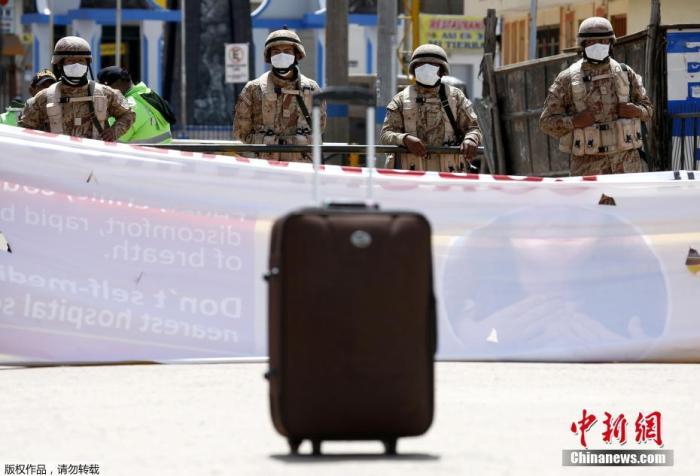China News Service, May 7th. According to Peru’s “Gazette”, from May 10 to 30 local time, the risk level of the epidemic in the Peruvian capital of Lima and Callao will be reduced from “extremely high” to “extremely high”. High", the epidemic prevention and control measures will also be adjusted.
According to reports, the specific measures are adjusted as follows: May 10-30, the curfew will be from 9 pm to 4 am; on May 16, 23, and 30 Sundays, all-day mandatory quarantine will no longer be implemented, but Private cars are still banned; inter-provincial land passenger traffic is limited to 50% to 100%, supervised by the Ministry of Transport; the passenger capacity of shops, supermarkets, markets, warehouses and pharmacies that supply basic necessities is limited to 50%.
On March 17, 2020 local time, the Peruvian government announced the closure of the border. Soldiers set up roadblocks on the border between Peru and Bolivia.
In addition, shopping malls and department stores have a passenger capacity limit of 30% and must be closed two hours before the curfew; restaurants indoor passenger capacity is limited to 40%, and there is no outdoor limit.
Church mass activities are still suspended, but the passenger capacity of other religious ceremonies is limited to 30%; the passenger capacity of banks and other financial institutions is limited to 50%; the passenger capacity of casinos, gyms, cinemas and theaters is limited to 30%; libraries, museums, The passenger capacity limit for archaeological memorials, cultural centers and galleries is 40%.
The authorities allow people to walk and exercise around the beach, but they cannot enter the beach or enter the water.
As long as they comply with the government’s biosafety protocol, there will be no capacity restrictions on activities carried out in open spaces, including nature reserves, botanical gardens, zoos, performing arts, cultural education, clubs and sports association activities.
On the 6th local time, Dr. Miguel Palacios Seli, Dean of the Medical College of Peru (CMP), reported that in the first few days of May, the curve of the Peruvian epidemic did decline, but the current prevention should be maintained. Control and restriction measures have allowed this trend to continue for two to three weeks.
Dr. Sely warned that if the government does not take measures to control the epidemic, it may eventually produce a "mixed third wave", that is, an increase in the deaths of patients with new coronary pneumonia and other diseases that have been neglected during the emergency.

